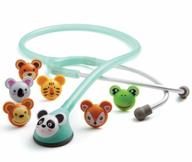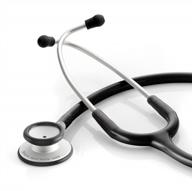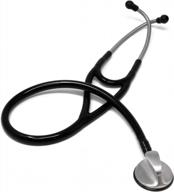II. Common Issues Faced When Diagnosing Food Safety and Quality
Ensuring food safety and quality is critical, but can be challenging for food manufacturers and suppliers. There are several common issues that arise when diagnosing and testing for food safety and quality:
Difficulty Detecting Pathogens and Contaminants
Many pathogens like Salmonella, Listeria, E. coli and chemical contaminants cannot be detected by sight, smell or taste. Specialized diagnostic tests are required to identify their presence. Some pathogens can be hard to culture in labs. Testing for viruses is also complex.
Long Test Result Wait Times
Traditional microbiological tests can take several days to weeks to produce results. This delays responses to contamination and increases risks. Quicker test methods are needed.
Inconsistent Sampling and Testing
If sampling and testing protocols vary, results become unreliable:
- Small, unrepresentative samples may miss contaminants
- Improper sample storage can kill pathogens
- Not testing finished products overlooks process errors
Difficulty Tracking Sources of Contamination
With multiple ingredients and processing steps, pinpointing where pathogens entered the supply chain is tricky. Better traceability systems are required.
Assessing New Risks and Threats
Emerging pathogens, food fraud, new technologies like GMOs require new diagnostic capabilities to assess risks. Regular technique updates are essential.
Balancing Speed, Accuracy and Cost
There are always trade-offs between how fast, accurate and affordable testing methods are. Ideal solutions balance these factors.
By understanding these common diagnostic challenges, food companies can develop better testing strategies and deploy appropriate technologies to reliably assure safety and quality.
III. Latest Advancements in Food Diagnostic Technology
Food diagnostics is rapidly evolving, with new technologies that provide faster, cheaper, more accurate and easier testing for food companies:
Rapid Pathogen Detection
Advanced rapid methods like ATP bioluminescence and PCR can detect pathogens in hours instead of days:
- Real-time PCR quickly amplifies DNA/RNA to identify microbes
- Immunoassays use antibodies to detect pathogens
- Automated systems allow high-throughput rapid analysis
Portable/Handheld Devices
Miniaturized instruments allow on-site testing:
- Portable ATP testers to assess cleanliness
- Smartphone platforms using optical sensors
- Lateral flow strips similar to pregnancy tests
Whole Genome Sequencing
WGS analyzes entire DNA of microbes, enabling:
- Precise pathogen identification and strain typing
- Traceback capability during outbreaks
- Detection of virulence/antibiotic resistance genes
Biosensors and Nanotech
Innovative sensors provide quick, accurate analysis:
- Electrochemical nanosensors detect minute contaminants
- Bioluminescent whole-cell biosensors
- Microfluidic lab-on-a-chip technology
Leveraging these advanced technologies allows food companies to conduct faster testing with greater sensitivity, while minimizing disruptions to operations and supply chains.
IV. Types of Food Diagnostic Tests and Screening Methods
A wide range of diagnostic tests and screening methods are available to evaluate food safety and quality:
Microbiological Testing
Detects pathogenic bacteria like Salmonella, Listeria, E. coli:
- Traditional plate counting - inexpensive but slow
- Polymerase Chain Reaction (PCR) - amplifies DNA for rapid results
- Immunoassays - use antibodies specific to pathogens
Allergen Testing
Identifies allergenic proteins using:
- ELISA assays
- Lateral flow devices
- PCR methods
GMO Screening
Testing techniques for genetically modified organisms:
- Protein-based tests like lateral flow strips
- DNA-based PCR assays
Chemical Contaminant Testing
Screens for pesticides, drugs, heavy metals using:
- Chromatography - GC, LC, HPLC
- Mass spectrometry
- Immunoassay methods
Shelf-life Testing
Evaluates spoilage microbes and indicators using:
- Aerobic plate counts
- Impedance technology
- Headspace gas analysis
Selecting appropriate rapid test methods allows food companies to conduct regular analysis in-house and make timely decisions.
V. Key Criteria for Selecting the Right Food Diagnostics Equipment
Choosing the optimal food testing instruments for your operations requires evaluating several key factors:
Testing Capabilities
- Instruments should offer the diagnostic tests you need, including for pathogens, allergens, shelf-life etc.
- Technology used - traditional plating, immunoassay, PCR - should suit your testing needs.
- Appropriate detection limits to identify microbial and chemical hazards.
- Qualitative and quantitative analysis capability.
Speed and Throughput
- Rapid test kits can provide results in minutes/hours versus days.
- Automated systems can process up to 90+ samples per hour.
- High throughput allows large volume of testing.
Accuracy and Reliability
- Select equipment with high specificity and sensitivity.
- Reputable manufacturer with proven technology.
- Third-party validation of instrumentation.
- ISO certified, CE marked, AOAC approved methods.
Ease of Use
- Intuitive software interface and minimal hands-on time.
- Limited technical expertise required for operation and maintenance.
- Detailed manuals and technical support.
- Minimal sample preparation needed.
Cost Considerations
- Instrument and running cost per test.
- Cost-effectiveness for testing volumes.
- Savings from rapid results and reduced product losses.
Carefully evaluating instruments against these criteria ensures fit-for-purpose food diagnostics solutions are selected.
VI. Applications of Food Diagnostics Across Various Food Industry Sectors
Food diagnostics serves a vital role across diverse food industry segments:
Meat and Poultry
- Pathogen testing for Salmonella, Listeria, E. coli O157:H7
- Screening raw materials, end products and environmental samples
- Monitoring hygiene indicators like aerobic plate counts
- Shelf-life microbial testing of fresh and processed meats
Dairy
- Quality testing of raw milk for bacteria, somatic cell counts, antibiotics
- Testing dairy ingredients and end products for pathogens and spoilage organisms
- Environmental monitoring of pathogens in processing plants
- Shelf-life and safety testing of cheese, yogurt, milk powders
Prepared Foods
- Screening ready-to-eat products for Listeria, Salmonella
- Allergen testing of ingredients and finished foods
- Confirming commercial sterility of canned/retorted foods
- Testing for food fraud, substitutions, adulterations
Produce
- Testing sprouts, leafy greens, fruits for E. coli, Salmonella
- Screening wash water and environmental samples
- Testing produce for pesticide and chemical residues
Routine diagnostics gives companies critical data to validate process controls, meet regulations, release products faster and assure consumers.
VII. Role of Accurate Testing and Screening in Preventing Foodborne Illnesses
Reliable diagnostics and screening is crucial for identifying hazards before they cause foodborne outbreaks:
Detecting Pathogens
- Testing for Salmonella, Listeria, E. coli can reveal contamination before products are released.
- Environmental monitoring of processing areas identifies harborage sites.
- Enables root cause analysis so corrective actions can be taken.
Validating Control Measures
- Diagnostics verify lethality steps like cooking, pasteurization are effective against pathogens.
- Testing wash water indicates efficacy of sanitation procedures.
- Demonstrates preventive controls are working.
Monitoring Raw Materials
- Screening ingredients like spices, produce helps mitigate entry of pathogens.
- Supplier audits involve testing raw materials.
- Preventing contamination at the source is most effective.
Supporting Food Safety Programs
- Testing provides data to establish microbial baselines and trends.
- Verification testing required in HACCP, GAP, GMP and other food safety plans.
- Demonstrates due diligence for regulatory compliance.
By enabling early detection of pathogens, toxins, and verifying process controls, food diagnostics is an indispensable tool for avoiding potentially disastrous outbreaks and protecting public health.
Top products in 🩺 Diagnostics & Screening
How to use your Amazon Prime to buy "Diagnostics & Screening"
Amazon Prime provides fast, free delivery on millions of products along with other benefits. Here are some tips on using Prime to purchase food testing and diagnostic equipment conveniently:
Find Relevant Products
Use the Amazon search bar to directly look for terms like "food diagnostics", "food pathogen testing", "food allergen test kits" etc. You can also browse or search within specific product categories like Lab Equipment, Food Service Equipment & Supplies, and Industrial & Scientific.
Check for Prime Eligibility
Products that are Prime-eligible will be designated with the Prime logo. This ensures free one-day or two-day shipping with no minimum order size. Non-Prime items will incur shipping fees based on order total.
Compare Options
Browse through the listings and product details to compare various food testing equipment and kits on parameters like technology used, analytes detected, speed, cost per test etc. Check reviews and ratings for each option.
Add Items to Cart
Once you’ve identified the diagnostics products you need, add them to your cart. The items will reflect Prime savings compared to non-Prime prices.
Select Free Delivery
At checkout, if you are a Prime member, rapid free delivery should be indicated. You can choose a convenient date and timing.
Track your Order
You will receive shipping confirmation and tracking information to monitor the status of your order. The products are delivered right to your doorstep quickly and safely.
With its huge selection and fast free shipping, Amazon Prime makes purchasing food testing supplies and equipment easier and more affordable.
Hba1c Test Kit Price
The price of HbA1c test kits varies depending on the brand, quantity, and where you purchase them. Here are some examples of prices for HbA1c test kits:
- Everlywell HbA1c Test - $49
- A1CNow+ Hba1c Blood Monitor w/ Sampler, 20 Test Kit - $380 ($19 per test cartridge)
- A1C Now+ Portable System Hba1c Blood Monitor 20 test kits - $925 for 5-pack ($185 per test kit)
- Human Hemoglobin A1c (HbA1c) Assay Kit - $345
- A1CNow Self Check HbA1c Test Kit PTS3070, 4 Ct - $61.99
It's important to note that some HbA1c test kits may be covered by insurance or eligible for FSA/HSA payments. It's always best to check with your healthcare provider or insurance company to see if they cover the cost of HbA1c test kits.
Hba1c Test Near Me
If you are looking for an HbA1c test near you, there are several options available. Here are some ways to find an HbA1c test location:
- LabFinder: You can use LabFinder to find a blood sugar test (Hemoglobin A1C) near you and book an appointment online for free.
- Quest Diagnostics: Quest Diagnostics offers an HbA1c test that you can purchase online without having to wait and pay for an appointment with a doctor. After your purchase, you can schedule an appointment at a nearby Quest Diagnostics location and have your specimen sample collected by a trained healthcare professional. You can access test results from your phone as soon as they’re available, with the option to discuss your results with an independent physician at no extra cost.
- Request A Test: Request A Test offers an HbA1c test that you can purchase online and find the lab location nearest to you or view a complete list of available lab locations.
- Sonora Quest Laboratories: Sonora Quest Laboratories offers an HbA1c test for $21 at one of their 75+ testing locations across Arizona. No insurance or doctor's order is needed.
- LabCorp: LabCorp offers an HbA1c test that can be useful for evaluating the long-term control of blood glucose concentrations in patients with diabetes, diagnosing diabetes, and more. You can find a LabCorp location near you on their website.
- Local Labs: You can also search for local labs in your area that offer HbA1c testing. Request A Test and LabFinder are two websites that can help you find local labs.
- Healthcare Provider: You can also ask your healthcare provider for recommendations on where to get an HbA1c test near you. They may be able to provide you with a list of local labs or testing centers.













